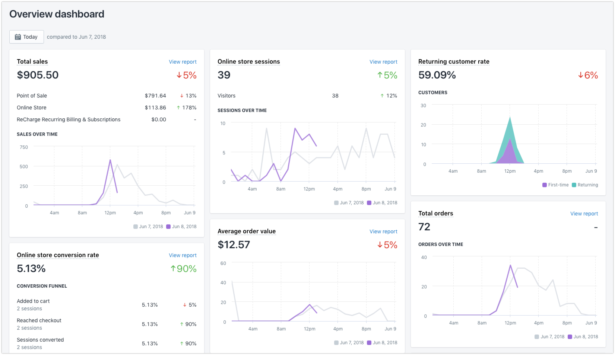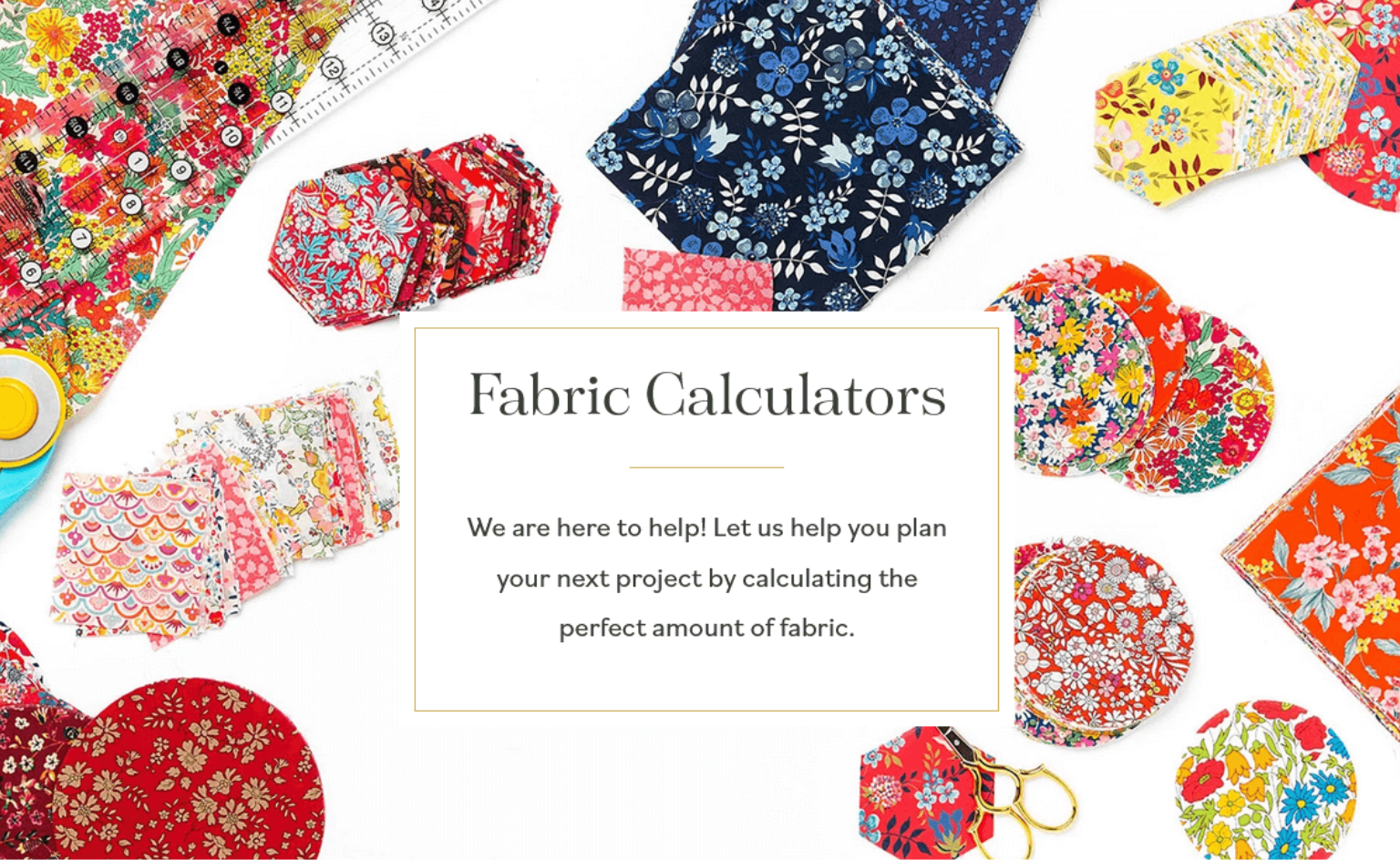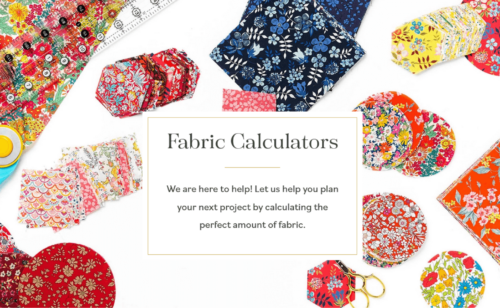Shopify vs Squarespace: Which Is Best for Ecommerce?

We often get questions from members of our Shipshape Collective like, “Why should I be on Shopify instead of Squarespace?” The Shopify vs Squarespace debate is a popular one and for good reason!
Squarespace can be a great option for many types of businesses, particularly those that need primarily informational or portfolio pages. If you run a restaurant, for example, Squarespace might be an ideal option for you, with their easy OpenTable reservations integration and many templates designed specifically with restaurants in mind.
However, Shopify was built from the ground up as an ecommerce platform, whereas Squarespace added the ecommerce features later, on top of their existing website builder. Squarespace’s Commerce solution and payment processors are offered as premium features only available on certain plans. On Shopify, their whole reason for existence is to make it easy to sell products online, so every type of plan they offer is designed with e-commerce in mind.
In the words of one of our developers, Kelly Vaughn, trying to use Squarespace to run an ecommerce website is “like using a kitchen as your bedroom. Technically you can do it, but that wasn’t the purpose of the room.”
Squarespace might be fine if you want to sell a few products online as a supplement to other parts of your business (for example, if you’re a consultant who wants to sell a book or two via your website), but if your primary goal is to sell more products online, there is one ecommerce website builder we recommend, and that is Shopify.
For weekly tips like this, subscribe to our newsletter
"*" indicates required fields
But what if I’m already on Squarespace? Is it worth it to move?
Aeolidia’s founder Arianne Foulks recently sent an email to our Shipshape Collective community about the sunk cost fallacy. She included a quote from a member of our community about their hesitation to switch from Squarespace to Shopify:
“I mostly love Squarespace, but their lack of attention to the commerce side is insane. I hate that I can’t batch update anything at all. It’s extremely tedious and has robbed me of lots and lots… and lots of time. That said, I’m hoping they will improve all that in the near future. I’ve just invested so much time and effort into making my site the way it is now; it scares me to consider seeing it go down the drain.”
As Arianne put it, “That money went down the drain the moment you spent it with Squarespace. You can make a new decision now. Are you really going to choose to let them continue to rob you of lots and lots of time?”
While switching to Shopify from another ecommerce platform might feel daunting at first, the longer you delay, the more potential revenue you could be losing by trying to sell your products through a website that isn’t optimized for ecommerce.

What the Shipshape Collective had to say in the Squarespace vs Shopify debate:
This topic has come up a number of times over the years in our Shipshape Collective Facebook group. One of our members, Amber Kristine, responded with her experience:
“I’ve used both and while Squarespace is great for content based websites… it really sucks for ecommerce beyond super simple features.
Shopify has waaaaaay more flexibility in terms of an online shop.
Shopify gives you more options as far as commerce features. And the themes available are phenomenal. Definitely sign up and try it out. There’s also different apps to enhance an already amazing experience. Everything from creating loyalty programs, upsells during checkout, and an easy tracking system. It really does SO. MUCH.”
Jenice Anderson made the move to Shopify from Squarespace because she found it easier to use while on the go:
“I started with Squarespace and have been with Shopify for the last two years or so… Number one reason I switched To Shopify over Squarespace is that I can add/edit products from my phone. On Squarespace I had to do it on a laptop. I do so much of my shop management via my phone so that one was huge. Shopify has its own integrated reader so my inventory is updated instantly at shows. No need to have a separate setup with Square. And it’s totally integrated with Facebook, Instagram, Pinterest, so people can shop directly from posts. I get 90% of my visits from Instagram so it’s important that people can just click through a post. Maybe Squarespace fixed some of this since I was there but I would never go back.”
Cecilia Leibovitz had tried lots of different ecommerce platforms before making the move to Shopify, and she couldn’t be happier:
“I had a Squarespace site and am in the process of putting together a new site in Shopify. Wish I’d done it years ago as it blows Squarespace away!
Even though my site isn’t live yet I already love so many things about Shopify:
I’m probably leaving out some things but I’ll add that I was sold on it before my free trial period ended and couldn’t sign up fast enough. In the past I’ve used Zen Cart, Monster Commerce, and as I mentioned Squarespace. None of those came close in terms of functionality and usability for a non tech person like me.”
Cecilia Leibovitz
At one point, a member gave Squarespace a try after having previously used Shopify. First, she shared this,
“I’m in the process of launching my shop on Squarespace but ran a previous biz on Shopify. So far, just loading products and how things are structured on the backend doesn’t work as seamlessly as Shopify. Lots of annoying little things- like I have 50 pieces that are part of one series so duplicating the same product but changing just a few details and individual images would make this go quickly but duplicating products doesn’t carry over images or anything added in additional info so it’s taking about 4 billion times longer than it should. So silly. I’ll update with more feedback after launch!”
A few months later, in answer to another question about whether to choose Shopify or Squarespace for an online store, she told us:
“If you plan on having inventory and a focus on online sales Shopify is the way to go. I’m going to be switching back to it from Squarespace. Squarespace is great but really lacking in its ecommerce framework.”

Some of our favorite ecommerce features that Shopify offers:
If you’re in the business of selling products, Shopify is the place to be. They are constantly innovating and improving their ecommerce features and finding ways to help you sell more.
Shopify Point of Sale
If you own a brick-and-mortar retail store, like many of our clients, Shopify’s Point of Sale feature makes it super easy to run your entire store from one piece of software. Shopify POS can take care of payments, checkout, and inventory as well as manage customer profiles and synchronize them between your online and retail customers.
Sell with Shopify across social media and online marketplaces
Shopify has really been working hard on what they call “multi-channel selling” where you can sell from social media, and other online channels. They make it seamless to cross-sell your products from a Shop section on your Facebook and Instagram, let customers buy your products directly through Facebook Messenger or Pinterest, and sell on eBay or Amazon – see which channels Shopify offers here.
Payment processing is more versatile
Since Shopify was designed with ecommerce in mind, they offer many more options for payment processors than Squarespace. With Squarespace Commerce, you can only connect Stripe, Venmo, and PayPal.
Shopify Payments allows you to accept credit cards instantly and directly with Shopify, rather than using third-party accounts. Shopify supports over 100+ external payment gateways, which makes it possible for Shopify to accept almost any currency in the world. When your customers use Shopify Pay across different merchants whose shops run on Shopify, their payment information is stored securely and filled in automatically, making it quicker and easier for your customers to shop with you.
Best-converting checkout
In a recent independent study, a leading global management consulting company found that Shopify’s overall conversion rate outpaces the competition by 15% – 36%! This can be attributed to four advantages: Shopify’s massive identity network, unmatched scale, consumer trust, and velocity of innovation.
Robust reports and analytics
While Squarespace offers some analytics and reports, Shopify’s ecommerce reporting and analytics were built from the ground up with online merchants’ needs in mind.
Shopify makes it easy to see your store’s recent sales activity and traffic, learn more about your visitors and customers, and analyze the transaction trends in your shop over time. Your overview dashboard offers many powerful insights, and you can even tailor the default reports to show the data that you’re most interested in.

In addition to Shopify’s own reports and analytics offerings, you can also set up Google Analytics for free to get even more data about your online shop’s traffic.
Ready to switch from Squarespace to Shopify?
Okay, so you’re convinced about why you should use Shopify to run your online store, and you’re ready to move your website from Squarespace to Shopify. First, no matter what platform you’re switching from, there are some things you’ll want to keep in mind so that you don’t lose your SEO rankings.
If your business is in the early stages, you may want to start with one of Shopify’s own themes. Read our tips on how to choose a Shopify theme from their theme store. As you’re getting your Shopify store set up, you’ll also want to keep in mind these Shopify blog design basics and Shopify email pop-up best practices. Once you’re really rocking and rolling, you might even feel ready to tackle some Shopify conversion optimization, aka tweaking your store so that you make even more sales!
If all of that feels too overwhelming to manage yourself, or if you’ve outgrown Shopify’s theme store and are ready for a custom Shopify website, we can help!
If you’ve been struggling with a DIY design for your brand and website, and your website just doesn’t match up to the level that the rest of your business is at, a custom Shopify ecommerce website is worth the investment.
Hire Impactful Shopify Help
Are you looking for a partner that can upgrade your brand and site, then stick around long term to optimize and maintain? Aeolidia is big enough to handle your complexities and small enough to be personally invested in your goals. Let's talk!
3 thoughts on “Shopify vs Squarespace: Which Is Best for Ecommerce?”
Leave a Comment
Related Posts
Let's take your online shop to the next level
The Shopify websites we design have a reputation for substantial improvements to ecommerce conversion rates and online sales. Let's talk!
















Eek, I’m caught in the Squarespace vs. Shopify in a different capacity! I’m a freelance illustrator that’s pivoting a bit from freelance commissions to selling art prints and other products online. My portfolio site on squarespace is targeting art directors at myname.com. I haven’t bought a domain or customized my URL for Shopify yet because I’m not sure how to handle it. Eventually, I’d love to have just one shop website with a portfolio tab on it. Currently I don’t want to move my portfolio off Squarespace because I have a robust portfolio targeting different markets, and it feels like too much to manage right now
Is it advisable to start my Shopify as mynameshop.com with the goal of it being myname.com someday?
I’m trying to toe the line between being strategic and over-thinking…
Thanks so much!
Signed,
Confused in Salt Lake City 😉
Hi Kaly, if you can’t stand to make the big move all at once, you might try shop.myname.com for your Shopify site. That way, myname.com is getting the SEO benefit.
Ooooh, brilliant! Thank you so much!